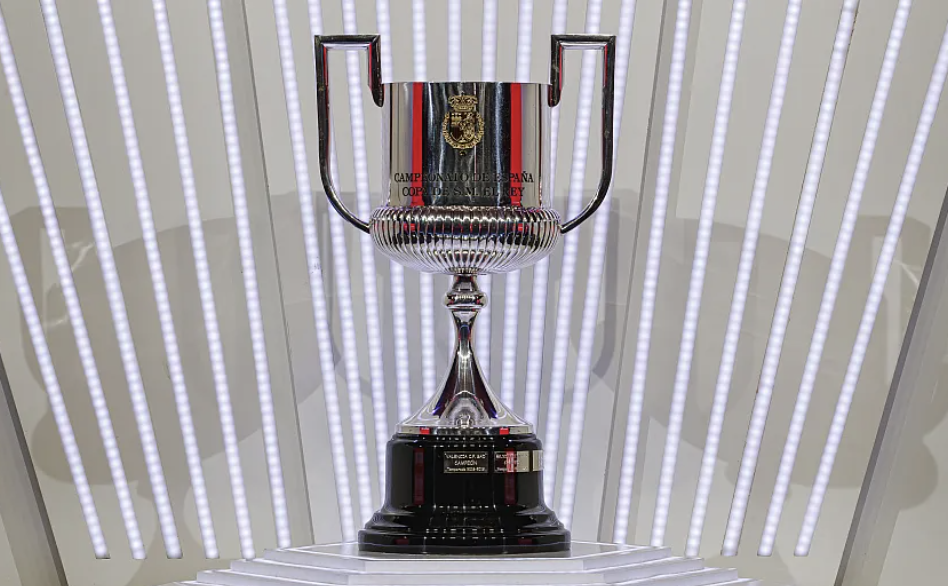
The history of the Copa del Rey championship and the meaning of its trophy
The Copa del Rey is one of the most prestigious and traditional tournaments in Spanish football, with a history dating back more than a century. This tournament, whose popularity and relevance have endured over the years, is important not only for the competition itself, but also for its symbolism, its impact on Spanish football culture, and the significance of its trophy. Below, we’ll explore its history and the symbolism of the coveted trophy.
Origins of the King’s Cup
The Copa del Rey, officially known as the Cup of His Majesty the King , was founded in 1903, making it the oldest tournament in Spanish football. The competition’s origins date back to a gesture by the Spanish monarchy, which promoted its creation under the auspices of King Alfonso XIII, who was a football enthusiast. The initial Copa tournament was played between football teams from different regions of the country, with the first edition being held in Madrid between teams such as Real Madrid and Club de Football de Barcelona (the precursor to today’s FC Barcelona).
Since its inception, the championship has grown in popularity, and its format has evolved as Spanish football has become more professional. Over the years, teams from all over Spain have had the opportunity to compete for the trophy, which has become a symbol of prestige, effort, and achievement.
Evolution and format
Throughout its history, the Copa del Rey has undergone several changes to its format. In its early years, only a few teams participated, and matches were played in single-elimination rounds. However, with the growth of football and the professionalization of clubs, the tournament has adopted a more complex structure with preliminary rounds, two-legged knockout rounds, and, more recently, the inclusion of lower-division teams competing against the top teams.
One of the highlights of the Copa del Rey is the final , a unique match in which the two best teams face off for the glory of the trophy. The final was a showcase of talent, intense emotions, and some of the most memorable moments in Spanish football, such as the famous “Clásico” between Real Madrid and FC Barcelona.
The meaning of the trophy
The trophy awarded to the Copa del Rey champion has been a symbol of distinction and honor since its creation. The trophy’s design has changed over the years, but it has maintained a very distinctive essence. The current trophy, known for its large size and height, consists of a silver base, and the top is a chalice with a human figure holding a cup. This design symbolizes the union of tradition and modernity, as well as the sacrifice and victory achieved through collective effort.
The trophy is not only a symbol of sporting triumph, but also represents the connection between sport and the Spanish monarchy. As its name suggests, the Copa del Rey is directly linked to the figure of the monarch, who, through his patronage, gave the competition its initial significance. Over the years, the image of the Copa del Rey has been associated with moments of great emotion and celebration, reflecting the importance of this tournament in Spanish culture.
Furthermore, the Copa del Rey holds special symbolism for the teams that win it, as it is seen as a reward for perseverance and dedication. Many clubs, especially those that fail to regularly reach the Champions League, see the Copa del Rey as an opportunity to make their mark on the history of Spanish football.
Impact on the culture of Spanish football
The Copa del Rey has had a considerable impact on Spanish sporting culture, not only because of the fierce competition and moments of drama on the pitch, but also because of its ability to unite fans. Being accessible to all teams, this tournament offers the opportunity for surprises and upsets, such as those underdogs who often pull off unforgettable feats by eliminating major clubs from the competition.
Furthermore, the “democratic” nature of the Copa del Rey has made it a competition eagerly awaited by both the big clubs and the smaller teams. Each season, lower-tier teams have the opportunity to challenge the big guns, making the knockout matches always unpredictable.
The history of the Copa del Rey reflects the growth and evolution of Spanish football. Throughout its more than 100 years of history, the tournament has maintained its prestige and relevance, becoming one of the most anticipated competitions on the Spanish football calendar. Its trophy is not only a tangible reward for a team’s efforts, but also a symbol of tradition, dedication, and achievement.
The Copa del Rey remains, without a doubt, a reflection of the competitive spirit of Spanish football, offering unforgettable moments that remain etched in the memories of fans, regardless of the size of the club that takes home the trophy.


